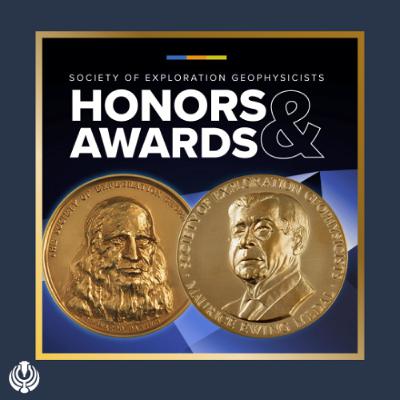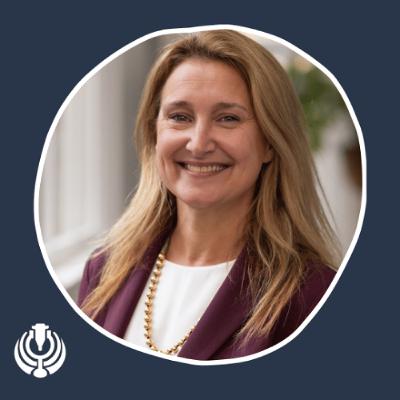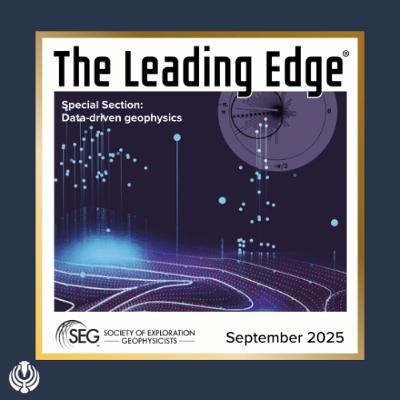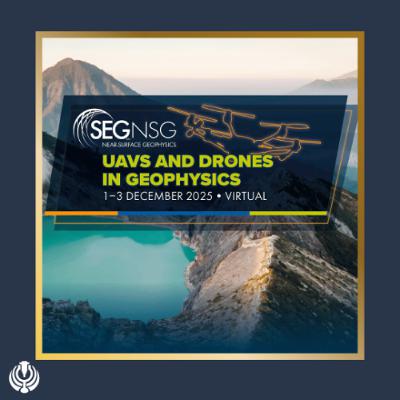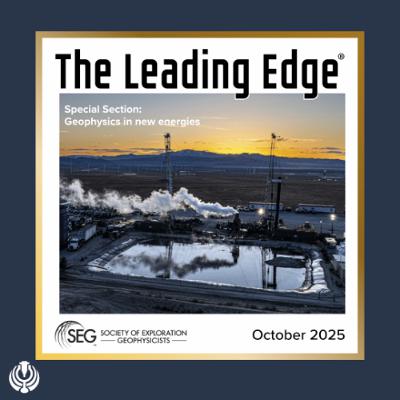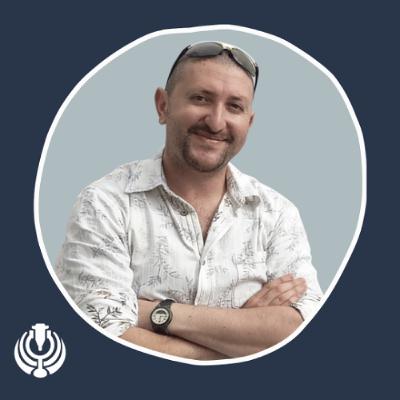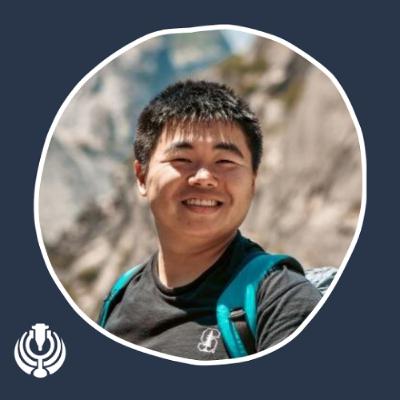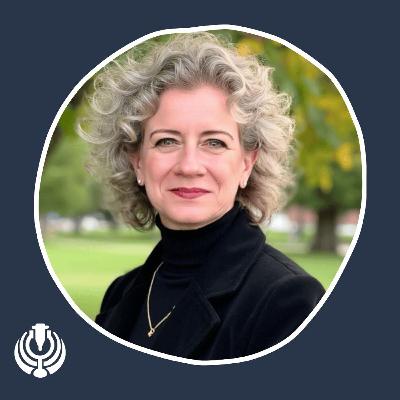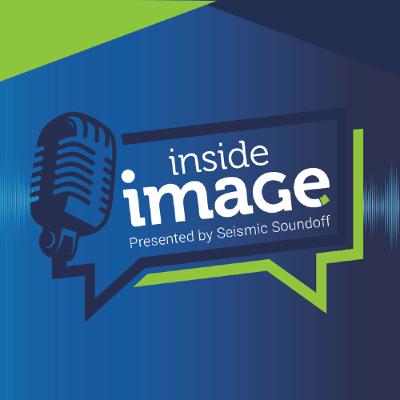Discover Seismic Soundoff
Seismic Soundoff

Seismic Soundoff
Author: Society of Exploration Geophysicists (SEG)
Subscribed: 110Played: 2,000Subscribe
Share
© All rights reserved
Description
Seismic Soundoff showcases conversations addressing the challenges of energy, water, and climate. Produced by the Society of Exploration Geophysicists (SEG), these episodes celebrate and inspire the geophysicists of today and tomorrow. Three new episodes monthly.
288 Episodes
Reverse
“Models are still the bread and butter in gravity and magnetics interpretation. Interpreters still have to condition the data properly, and that's half technical, half art.”
Betty Johnson shares how her early career in gravity and magnetics grew from curiosity, hands‑on learning, and rapidly changing technology. She explains how potential field methods remain valuable for addressing energy, water, and climate challenges because they are affordable, scalable, and deeply rooted in Earth’s history. Her reflections underscore the importance of high-quality data, solid fundamentals, and ongoing learning.
KEY TAKEAWAYS
> Gravity and magnetics remain essential because they are cost‑effective, scalable, and useful across many energy and environmental applications.
> Strong fundamentals in physics, geology, and modeling help interpreters make better decisions and collaborate across disciplines.
> Good data, field experience, and continuous learning are critical for building a long and impactful geophysics career.
LINKS
* Read "The Meter Reader—The tools of the trade in gravity and magnetics, 1978–1988" at https://doi.org/10.1190/tle44090738.1
* Elizabeth A. Johnson, "Gravity and magnetic analyses can address various petroleum issues" at https://doi.org/10.1190/1.1437844
* Elizabeth A. E. Johnson, "Use higher resolution gravity and magnetic data as your resource evaluation progresses" at https://doi.org/10.1190/1.1437846
THIS EPISODE SPONSORED BY STRYDE
STRYDE enables high-resolution subsurface imaging that helps emerging sectors such as CCS, hydrogen, geothermal, and minerals de-risk and accelerate exploration - delivered through the industry’s fastest, most cost-efficient, and agile seismic solution. Discover more about STRYDE at https://stryde.io/what-we-do.
“Your nomination might be the only way their work is recognized at the level it deserves. The Honors and Awards program is powered by our members and only succeeds when we take the time to lift up one another.”
Maurice Nessim explains why SEG Honors and Awards are essential for recognizing scientific, professional, and social contributions in applied geophysics. He shares how member nominations ensure a diverse and meaningful set of candidates and encourages everyone to participate before the January 1 deadline. He also highlights the value of attending the IMAGE ’26 ceremony to celebrate the awardees and learn from their achievements.
Nominate a colleague by 1 January, 2026 at https://seg.org/resources/honors-and-awards/.
KEY TAKEAWAYS
> SEG Honors and Awards rely on member nominations to recognize impactful scientific, professional, and humanitarian contributions.
> Recognition strengthens careers, elevates organizations, and encourages innovation across applied geophysics.
> Attending the IMAGE ’26 ceremony supports awardees and helps the community learn from their work.
GUEST BIO
Maurice Nessim is the Founder, CEO, and Chairman of Greener Cleaner Cooler Globe and currently serves as Chair of the SEG Honors and Awards Committee. He brings several decades of leadership in earth science and energy, applying that expertise to advance medical imaging through his work with Ultrasound Associates. His career includes serving as a Board Director at TGS, where he guides strategy and innovation across the geoscience and energy sectors. With more than thirty years in geophysics, he has consistently championed excellence and forward‑looking solutions. His work reflects a deep commitment to using scientific progress for societal benefit.
Complete show notes at https://seg.org/podcasts/episode-280-the-awards-that-shape-geophysics-and-why-they-need-you/.
"Sustainability is about reliance and resilience. Our focus needs to be on how systems remain reliable over time."
Céline Gerson shares how Fugro is reshaping its business to focus on resilience, adaptability, and sustainability. She explains the importance of critical minerals, coastal resilience, and digital transformation for the future of geophysics. Her insights highlight how innovation, respect, and collaboration can help geoscientists succeed in a rapidly changing world.
KEY TAKEAWAYS
> Innovation often emerges during times of crisis, and companies can use downturns to launch new technologies and approaches.
> Applied geophysics plays a direct role in climate resiliency projects, from strengthening coastal infrastructure to modeling storm surge impacts.
> Transparency about data limitations and involving diverse teams in decision-making strengthens risk management and builds trust in geoscience recommendations.
GUEST BIO
Céline Gerson is the Group Director Americas at Fugro and President of Fugro USA. With over 25 years of experience, Céline has a proven record of successfully growing complex technical businesses across various industries. Before joining Fugro, Céline served as Vice President, Global Account Director for Schlumberger. She was particularly focused on energy transition, sustainability, and digital transformation. Before that, she was President of Schlumberger Canada. Along with being a Harvard Business School Alumna, Céline holds a Bachelor’s degree from the European University of Brussels and a Juris Doctorate from the University of Houston.
THIS EPISODE SPONSORED BY STRYDE
STRYDE enables high-resolution subsurface imaging that helps emerging sectors such as CCS, hydrogen, geothermal, and minerals de-risk and accelerate exploration - delivered through the industry’s fastest, most cost-efficient, and agile seismic solution. Discover more about STRYDE at https://stryde.io/what-we-do.
"Sometimes the traditional methods are way more effective or efficient in handling certain things. To succeed in this new paradigm, we need to build on our strong fundamentals and progress further."
Ivan Lim Chen Ning shares how data-driven methods are reshaping geophysics by challenging traditional workflows and opening new possibilities. He highlights the role of AI, machine learning, and fiber-optic sensing in improving seismic interpretation, imaging, and monitoring. His insights show how combining strong fundamentals with modern digital tools can help geophysicists solve problems more effectively.
Read the September issue of TLE about data-driven geophysics at https://library.seg.org/toc/leedff/44/9.
KEY TAKEAWAYS
> AI and data-driven tools open new paths. They help geophysicists move beyond traditional workflows to find faster and simpler solutions.
> Fiber-optic sensing changes monitoring. DAS provides continuous well data, replacing point sensors and revealing signals directly.
> Strong fundamentals still matter. Success comes from combining proven geophysical methods with modern digital skills.
GUEST BIO
Ivan Lim Chen Ning is an Earth Scientist – Fiber Optics at Chevron, where he analyzes Distributed Fiber Optic Sensing (DFOS) data and develops real-time algorithms for field applications. He applies deep learning and signal processing to improve DFOS workflows, advancing distributed acoustic sensing in the energy industry. A member of Chevron’s Emerging Leader 2024 cohort, Ivan is recognized for solving cross-disciplinary challenges and driving innovation to help secure energy for the future.
"The applications of drones in geophysics have increased dramatically in the last 10 years. Drones can be said to be an established platform for geophysical measurement methods."
Drones have quickly moved from experimental tools to essential platforms in geophysics. Johannes Stoll explains how advances in sensor miniaturization, AI navigation, and regulatory clarity are enabling wide-area surveys that deliver better data at lower costs. He highlights how collaboration across disciplines and countries is driving innovation, opening new opportunities for energy transition projects and subsurface modeling.
KEY TAKEAWAYS
> Drones are now established tools for geophysical surveys, especially in magnetics and electromagnetics.
> Sensor miniaturization and AI navigation are enabling wider, more precise, and cost-effective measurements.
> Collaboration between industry, academia, and government is critical to advancing drone-based geophysics.
LINKS
* UAVs and Drones in Geophysics (1-3 December 2025): Read the summit topics, technical program, explore the virtual showcase information, register to attend, and more at https://seg.org/calendar_events/uavs-and-drones-in-the-geophysics/.
GUEST BIO
Dr. Johannes Stoll is the founder and CEO of Mobile Geophysical Technologies (MGT). With a background in geophysics and electrochemistry, he has held multiple roles across the Oil & Gas industry as well as in leading research institutions. Bringing more than 30 years of experience as an active exploration geophysicist, Dr. Stoll combines scientific expertise with entrepreneurial vision to drive innovation in mobile geophysical solutions.
"Geophysics plays a central role in this energy transition because it provides the tools and insights needed to understand, manage, and optimize subsurface resources. These resources are critical for both traditional and renewable energy systems."
Geophysics is essential for geothermal energy, carbon storage, hydrogen storage, and critical minerals. Joël Le Calvez and Erkan Ay explain how methods like multi-physics workflows and distributed acoustic sensing are improving reliability, scalability, and safety. They also highlight the skills and mindset geophysicists need to succeed in a rapidly changing energy landscape.
Read the October issue of The Leading Edge that features a special section about geophysics for new energies at https://library.seg.org/toc/leedff/44/10.
KEY TAKEAWAYS
> Geophysics provides the foundation for safe, efficient, and scalable use of subsurface resources in the energy transition.
> Multi-physics workflows and DAS technologies reduce uncertainty and improve monitoring of geothermal and storage projects.
> Future geophysicists must combine technical expertise with adaptability, collaboration, and field experience.
GUEST BIOS
Joël Le Calvez is Principal Geologist at SLB, where he develops software for processing, visualization, and interpretation of microseismic monitoring data. His work supports applications ranging from hydraulic fracture treatment to CO₂ sequestration and geothermal injection, using downhole, shallow wellbore, and surface arrays. Before joining SLB, Joël contributed to research at the Bureau of Economic Geology’s Applied Geodynamics Laboratory and at Etudes et Recherches Géotechniques. He holds a Ph.D. in salt tectonics, an M.Sc. in geosciences, and a B.Sc. in physics.
Erkan Ay is an accomplished geophysicist with more than 18 years of international experience across oil and gas, carbon capture and storage, and academic research. He is recognized for advancing techniques in microseismic monitoring, DAS, 4D VSP, and seismic-while-drilling. Erkan’s work integrates seismology and petrophysics to better characterize complex subsurface structures. Currently, Erkan serves as Chair of the SEG Research Committee and Vice Chair of the SEG IMAGE 2026 Technical Committee, guiding collaborative efforts to advance geophysics for sustainable energy solutions.
"Generative modeling is a game-changer. We can now capture high-dimensional statistics that we could never have captured in the past."
Felix Herrmann explains how digital twins and generative AI are reshaping subsurface geophysics. He highlights the importance of open-source tools, multimodal data, and uncertainty-aware models for better decision-making in energy and storage projects. By combining physics with AI, his work shows how geophysics can move beyond silos and create more reliable and efficient solutions.
KEY TAKEAWAYS
> Digital twins informed by multimodal data can reduce uncertainty and improve reservoir management.
> Open-source tools and agreed benchmarks are essential for accelerating innovation in geophysics.
> Combining physics-based models with generative AI creates robust, practical solutions for complex subsurface challenges.
Read Felix's article in The Leading Edge, "President's Page: Digital twins in the era of generative AI," at https://doi.org/10.1190/tle42110730.1.
GUEST BIO
Felix J. Herrmann earned his Ph.D. in engineering physics from Delft University of Technology in 1997, followed by research appointments at Stanford and MIT. He later joined the University of British Columbia faculty in 2002 and moved to the Georgia Institute of Technology in 2017, where he is the Georgia Research Alliance Scholar Chair in Energy with cross-appointments across multiple schools.
Dr. Herrmann leads a cross-disciplinary research program in computational imaging, spanning seismic and medical applications, and is recognized for innovations in machine learning, optimization, and high-performance computing that have reduced costs in seismic data acquisition and imaging. A past SEG Distinguished Lecturer and recipient of the SEG Reginald Fessenden Award, he directs the Seismic Laboratory for Imaging and Modeling and co-founded the Center for Machine Learning for Seismic (ML4Seismic) to advance AI-assisted seismic imaging and reservoir monitoring through industry collaboration.
"Physics-based approaches are like solving a puzzle with a set of rules. Data-driven geophysics is more like giving the puzzle to a computer that can learn the rules itself."
Amine Ourabah shares how data-driven geophysics is transforming our understanding of the subsurface by combining physics with the power of machine learning. He explains how new tools, such as nimble nodes and distributed acoustic sensing, are making seismic imaging faster, cheaper, and more accessible across various industries, including oil and gas, geothermal, and carbon storage. Amine also highlights the importance of curiosity, adaptability, and simplicity in shaping the next generation of geophysicists and technologies.
Read the September issue of The Leading Edge that features a special section about data-driven geophysics at https://library.seg.org/toc/leedff/44/9.
KEY TAKEAWAYS
> Data-driven methods reduce uncertainty, speed up workflows, and make seismic imaging more affordable for industries with limited budgets.
> Advances in sensing technology and open data sharing are fueling breakthroughs in AI-driven geophysics.
> Curiosity, adaptability, and strong fundamentals in physics and data science are essential skills for future geophysicists.
GUEST BIO
Amine Ourabah serves as Chief Geophysicist at STRYDE’s London office, where he leads a world-class team of imaging experts and drives the company’s data analytics strategy. He focuses on evolving STRYDE’s technology to deliver faster, leaner, and more accurate subsurface insights, particularly in support of the rapidly expanding renewables sector.
THIS EPISODE SPONSORED BY KATALYST DATA MANAGEMENT
Katalyst Data Management provides the only integrated, end-to-end subsurface data management solution for the oil and gas industry. Its employees operate in North America, Europe, Asia-Pacific, and South America and are dedicated to optimizing the value of subsurface data, including seismic and well data. Katalyst enables clients’ digital transformation of E&P data with digitizing services and digital transformation consulting. Learn more at https://katalystdm.com.
THIS EPISODE SPONSORED BY STRYDE
STRYDE is the world’s premier provider of ultra-lightweight seismic nodes, revolutionizing high-density subsurface imaging by making it faster, more cost-effective, and environmentally sustainable. Serving industries from oil and gas, geothermal, mining, and CCUS to academic research, STRYDE combines advanced technology, innovative exploration solutions, and expert data processing services to deliver actionable subsurface intelligence like never before. Discover STRYDE at https://stryde.io.
“Distributed chemical sensing really is the next frontier in fiber-optic monitoring. It adds a new dimension by directly connecting chemical changes in the environment to signals we can read.”
Distributed chemical sensing (DCS) is an emerging technology that utilizes fiber optics to measure chemical changes over long distances in real-time. Authors Christian Totland, Thomas Dylan Mikesell, and Peter James Thomas join host Andrew Geary to discuss their new paper, "Distributed chemical sensing: An unexplored frontier in urban, industrial, and environmental monitoring." Unlike traditional point sensors, which only capture data at one location, DCS has the potential to provide continuous chemical information with both high spatial and temporal resolution. This innovation could transform how we monitor pipelines, groundwater, and industrial sites, while also opening new opportunities for collaboration between geophysics, chemistry, and material science.
KEY TAKEAWAYS
> DCS can detect leaks, contamination, and chemical changes directly, offering more accurate monitoring than pressure or temperature proxies.
> The technology is still in its early stages, which means there are many opportunities for research, innovation, and interdisciplinary collaboration.
> If developed further, DCS could provide affordable, real-time monitoring for critical infrastructure and environmental systems worldwide.
LINKS
* Christian Totland, Thomas Dylan Mikesell, and Peter James Thomas, (2025), "Distributed chemical sensing: An unexplored frontier in urban, industrial, and environmental monitoring," The Leading Edge 44: 598–605. - https://doi.org/10.1190/tle44080598.1
* Learn more about this special section on urban and infrastructure geophysics - https://library.seg.org/doi/10.1190/tle44080587.1
* Listen to Haipeng Li's interview (also from this special section) - https://seg.org/podcasts/episode-271-the-low-cost-seismic-revolution-already-buried-in-your-city/
"By mapping fiber optic cables accurately, we can transform them into dense seismic arrays. This opens the door to city-scale imaging and monitoring."
Haipeng Li explains how distributed acoustic sensing (DAS) can turn existing urban fiber optic cables into powerful seismic arrays for near-surface imaging and monitoring. By using everyday traffic and ambient noise, his team can track groundwater changes, detect geohazards, and study fault structures without costly field deployments. This approach offers a new way for geophysicists, engineers, and city planners to work together for safer, more resilient urban environments.
KEY TAKEAWAYS
> Existing fiber optic cables can be transformed into dense, city-scale seismic arrays using DAS technology.
> Vehicle-induced seismic waves provide highly repeatable data for monitoring small subsurface changes, while ambient noise helps extend imaging depth.
> Urban DAS monitoring can reveal how infrastructure affects groundwater recharge and can support hazard assessment and infrastructure planning.
GUEST BIO
Haipeng Li is a third-year Ph.D. candidate in the Geophysics Department at Stanford University, advised by Biondo Biondi in the Stanford Earth Imaging Project (SEP). His research centers on spatiotemporal subsurface monitoring, with a focus on developing efficient and robust time-lapse seismic waveform inversion methods and uncertainty quantification approaches. He applies these techniques to real-world challenges such as geological CO2 sequestration for the energy transition and groundwater monitoring in urban environments, often leveraging Distributed Acoustic Sensing (DAS) data. He is a student member of the AGU, SSA, and SEG.
LINKS
* Haipeng Li, Jingxiao Liu, and Biondo L. Biondi, (2025), "Near-surface imaging and monitoring enabled by urban distributed acoustic sensing seismic arrays," The Leading Edge 44: 588–597. - https://doi.org/10.1190/tle44080588.1
"The glossary will bridge two complex worlds, geoscience and sustainability, and make them easier to understand."
Maria Angela Capello shares her vision for a new glossary that connects geoscience to sustainability in clear, practical terms. She explains how a shared vocabulary can help scientists, educators, and policymakers better understand the purpose and global impact of geoscience work. By linking technical expertise to the UN Sustainable Development Goals, the glossary aims to inspire collaboration, education, and a stronger sense of purpose across the profession.
KEY TAKEAWAYS
> A dedicated glossary can make sustainability concepts easier to understand and apply in geoscience work.
> Geoscientists contribute to all 17 UN Sustainable Development Goals, not just climate-related ones.
> Clear, shared language can help connect technical work to education, policy, and public understanding.
GUEST BIO
Maria Angela Capello (MAC) is a global leader in the energy sector, championing sustainability, equity, and diversity. An active collaborator with the United Nations and major geoscience societies, she has been honored with Italy’s Star of Italy knighthood and UNESCO recognition for advancing the UN Sustainable Development Goals. A sought-after speaker and author of three books, MAC is the only person to serve as a Distinguished Lecturer for AAPG, SPE, and SEG. She advises on sustainability, ESG, and leadership worldwide, with certifications from Cambridge University and IFP School.
LINKS
* Read "The Geophysical Sustainability Atlas: Mapping geophysics to the UN Sustainable Development Goals" - https://doi.org/10.1190/tle40010010.1
* K-12 Resources - https://education.americangeosciences.org/resources
* Practical Geocommunication for the American Geosciences Institute - https://training.geologize.org/pages/agi
For this episode, we’re re‑releasing one of the most powerful stories we’ve ever told - a complete listening experience that transports you to one of the most remote and challenging places on Earth.
Searching for Water in Kakuma takes you inside the second‑largest refugee camp in the world, home to more than 185,000 people and still growing. There, a team of Canadian geophysicists joined forces with determined refugees and locals to take on a life‑or‑death challenge: finding safe, sustainable water for tens of thousands in East Africa.
This episode offers an unflinching look at the obstacles, breakthroughs, and human resilience at the heart of applied geophysics.
If you’re new to Seismic Soundoff, we’re glad you’ve chosen to listen. This podcast shares stories that connect geoscience to real‑world impact - from breakthrough research and innovative technology to the people applying them to solve Earth’s toughest challenges.
Starting September 11, we’ll release three brand‑new interviews every week, bringing you fresh voices and powerful stories from across the geoscience community.
For now, please enjoy this deeply personal and meaningful story.
For show notes - including a full transcript, photos, and links to explore the Kakuma water project and Paul Bauman’s work - visit seg.org/podcast/Post/6368.
To listen to other GWB podcasts, visit https://seg.org/podcast_tag/geoscientists-without-borders/.
GEOSCIENTISTS WITHOUT BORDERS®
Get involved with Geoscientists without Borders! Visit the GWB website at https://seg.org/gwb to learn about funded projects, donate, or apply to lead a project. Whether you are a student, researcher, or industry professional, your skills and support can make a significant difference.
SPONSOR
Schlumberger strives to be a unifying force for social and environmental stewardship, and engages in philanthropic activities that reflect the company’s values. As the founding sponsor of Geoscientists Without Borders®, Schlumberger believes in the science of geophysics to effect positive changes in communities facing environmental hardship and natural hazards.
INTERVIEWS
Paul Bauman, Landon Woods, Erin Ernst, Doug MacLean, Franklin Koch, Brendan O’Brien, Alastair McClymont
Music in the episode courtesy of Epidemic Sound. Additional sound was provided by Brendan O’Brien.
This episode was hosted, edited, and produced by Andrew Geary. Thank you to the SEG podcast team - Jennifer Crockett, Beth Donica, Ally McGinnis, Mick Swiney, and Adrienne White, as well as SEG staff Katie Burk and Linda Ford.
Karelia La Marca shares how her passion for geophysics has taken her from the classroom to exciting fieldwork around the world. She offers an encouraging tip for first-timers while explaining the skills and teamwork that make science stronger.
Get a front-row seat to the conversations shaping the geosciences.
Inside IMAGE is a special series from Seismic Soundoff, SEG’s flagship podcast hosted by Andrew Geary, now in its 10th year. This limited-edition series takes you behind the scenes of IMAGE, the premier geoscience event, with exclusive interviews and in-depth discussions.
Learn more at https://www.imageevent.org/.
Bill shares how reconnecting with colleagues fuels collaboration and why sustainable energy means balancing oil, gas, and new sources to meet global needs. He discusses progress in reducing carbon impact, the urgent need to attract top talent, and takes pride in contributing to technologies that shape everyday life.
Get a front-row seat to the conversations shaping the geosciences.
Inside IMAGE is a special series from Seismic Soundoff, SEG’s flagship podcast hosted by Andrew Geary, now in its 10th year. This limited-edition series takes you behind the scenes of IMAGE, the premier geoscience event, with exclusive interviews and in-depth discussions.
Stay connected at www.imageevent.org/.
Adriana reflects on the power of connection across science, industry, and academia, as well as the importance of listening to the needs of its members. She explores how geoscientists can expand into new energy solutions, support students’ career paths, and use storytelling to engage the public and strengthen the community’s impact.
Get a front-row seat to the conversations shaping the geosciences.
Inside IMAGE is a special series from Seismic Soundoff, SEG’s flagship podcast hosted by Andrew Geary, now in its 10th year. This limited-edition series takes you behind the scenes of IMAGE, the premier geoscience event, with exclusive interviews and in-depth discussions.
Stay connected at https://www.imageevent.org/.
Get a front-row seat to the conversations shaping the geosciences.
Inside IMAGE is a special series from Seismic Soundoff, SEG’s flagship podcast hosted by Andrew Geary, now in its 10th year. This limited-edition series takes you behind the scenes of IMAGE, the premier geoscience event, with exclusive interviews and in-depth discussions.
Geoscientist Lars Koehn shares how his journey from student to young professional fuels his passion for clean energy and carbon storage. He reflects on the power of networking, mentorship, and collaboration at IMAGE, where new technologies and ideas shape the future of geoscience.
And it's not too late to join the event driving innovation in Earth science. Learn more at https://www.imageevent.org/.
Get a front-row seat to the conversations shaping the geosciences.
Inside IMAGE is a special series from Seismic Soundoff, SEG’s flagship podcast hosted by Andrew Geary, now in its 10th year. This limited-edition series takes you behind the scenes of IMAGE, the premier geoscience event, with exclusive interviews and in-depth discussions.
Structural geologist Molly Turko shares why she loves the diversity of ideas and people at IMAGE, from AI applications to new fault-picking methods. She highlights how collaboration across disciplines sparks fresh insights and why these conversations make geoscience both motivating and fun.
And it's not too late to join the event driving innovation in Earth science. Learn more at https://www.imageevent.org/.
Get a front-row seat to the conversations shaping the geosciences.
Inside IMAGE is a special series from Seismic Soundoff, SEG’s flagship podcast hosted by Andrew Geary, now in its 10th year. This limited-edition series takes you behind the scenes of IMAGE, the premier geoscience event, with exclusive interviews and in-depth discussions.
Alison Malcolm, SEG’s incoming VP for Publications, joins us to share why IMAGE’s mix of academia and industry, along with its broad technical themes, makes it a vibrant space for connection and idea‑sharing.
And it's not too late to join the event driving innovation in Earth science. Learn more at https://www.imageevent.org/.
Get a front-row seat to the conversations shaping the geosciences.
Inside IMAGE is a special series from Seismic Soundoff, SEG’s flagship podcast hosted by Andrew Geary, now in its 10th year. This limited-edition series takes you behind the scenes of IMAGE, the premier geoscience event, with exclusive interviews and in-depth discussions.
As Vice Chair of the IMAGE 2025 Technical Program, Bunmi Elebiju highlights the event’s multidisciplinary and global nature, with over 1,100 presentations, interactive exhibits, and strategic networking opportunities, as a catalyst for shaping the future of the energy industry.
And it's not too late to join the event driving innovation in Earth science. Learn more at https://www.imageevent.org/.
“The knowledge we learn may not change. The way we learn will change very fast.”
Dr. Ge Jin explains how large language models are transforming the way geophysics is taught and learned, particularly by enhancing access to clear explanations and accelerating research. He shares why assessment must evolve and how allowing LLMs in coding classes, while focusing on physics and logic, helps students solve harder problems. The conversation explores prompt engineering, secure AI use in industry, transparent writing practices, and the opportunity to build an SEG library-powered model for cutting-edge knowledge.
KEY TAKEAWAYS
> Prompt power: Knowing how to ask AI the right way is becoming as important as knowing where to find the answer - daily practice builds skill and confidence
> Continuous learning boost: LLMs speed up literature research and concept review, letting geophysicists grasp new fields in hours instead of weeks
> Strategy ahead: Training AI on the SEG library could provide reliable, advanced knowledge, alongside company‑specific models that protect data and address language bias.
GUEST BIO
Dr. Ge Jin is Associate Professor of Geophysics and co-PI of Reservoir Characterization Project at Colorado School of Mines. His research focuses on Distributed Fiber-Optic Sensing (DFOS) applications in the fields of oil & gas, geothermal, CO2 sequestration, smart city, and earthquake hazard. He is also interested in machine-learning applications and seismic imaging. He obtained his Ph.D. in Geophysics from Columbia University in the City of New York, and dual B.S. in Geophysics and Computer Science from Peking University in Beijing. He worked as a research geophysicist in the oil industry for five years before joining Colorado School of Mines as a faculty member in 2019.
LINKS
* Read Ge Jin's article, "President's Page: The transformative role of large language models in geophysics education," at https://doi.org/10.1190/tle44050326.1
* Attend IMAGE '25 - https://www.imageevent.org/
* Learn more about the new podcast series, Inside IMAGE, presented by Seismic Soundoff - https://www.imageevent.org/podcast



